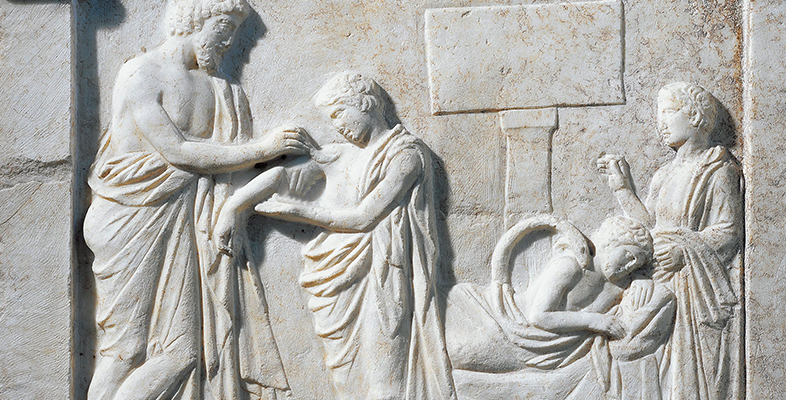2.1 The cult of Amphiaraos: orientation
If this is the first time you’ve come across the name Amphiaraos, don’t worry! No knowledge of Amphiaraos or his cult site is required for you to complete this course. However, you may find Activities 3 and 4 helpful for bringing you up to speed before you go on to look more closely at aspects of his cult worship in later sections.
Activity 3
Read The Amphiareion at Oropos: An Introductory Guide [Tip: hold Ctrl and click a link to open it in a new tab. (Hide tip)] (open it in a new tab or window so you can easily find your way back to the course).
Then, using this guide, complete the missing words in the short text below using the drop-down list provided.
Comment
Here is an example of a completed text. If you didn’t get all of the words in the right places, take note of their correct placement now.
The sanctuary of Amphiaraos is also known as the Amphiareion. It is situated within a town called Oropos between Attica and Boiotia in a wooded grove. The Athenians probably founded the sanctuary in the fifth century BCE. According to Herodotos, the Amphiareion was once a popular dream oracle, but by the late fifth century BCE it was associated with healing.
In Greek mythology Amphiaraos is associated with the Seven Against Thebes. He allegedly met his fate when he fled from Thebes on his chariot and was swallowed up by the earth.
Oropos was a politically weak city-state. The Athenians and the Boiotians often competed to control the city and the sanctuary of Amphiaraos, but at times the city of Oropos was independent. In later periods, the Romans were also interested in the Amphiareion.
To understand the history of Oropos and the Amphiareion we mainly rely on material culture (that is, physical objects which come down to us from the ancient world) rather than literary evidence. For example, objects tell us about the Great Amphiaraia, a festival celebrated in Amphiaraos’ honour which included an event in which competitors leapt in and out of moving chariots.
More than 500 inscriptions are known to have been set up at the sanctuary. These inscriptions help us unravel the interactions that took place within the confines of the sanctuary. They also helpfully tell us about how individuals and cities sought to identify with Amphiaraos’ religious practice.
